Creepy Halloween Costumes & Frightful Tales Of The Season
Back in the days of yore, way back when cellphones weren’t even a twinkle in our imagination’s eye, Halloween was a time of ghouls, goblins, and nasty critters. No, sexy vampires, no Spongebob, no astronauts, no double-meaning “isn’t that leotard a bit too tight? How many Harley Quinn costumes have we seen tonight?” Nope, the 31st of October was nightmare fodder for Stephen King… Pennywise would have run off screaming into the woods had he been present in old Halloween batches. Halloween was about scaring the bejesus out of whomever you stumbled upon that night. It was a night of mischief, mayhem, and true trick r’ treat… as in “give me the candy or wake up next morning with your house on fire and your cat skinned alive, punk.” It really was a magical night. And the main component of that night was the fright wear. Kids, adults, grandpa, even Fido the dog trying to one-up their neighbors with hand-crafted regalia that could make priest reach for the Bible and a bottle of Holy Water. Down below is a collection of frightening pics’, truly awful, cringe-worthy monstrosities of the type of shenanigans and masquerade society used to partake in before Halloween was kidnapped by the Disney Corporation and Marvel… It was a basically civilized, by a smidgen, version of The Purge.
The skeleton
The word Halloween comes from a Scottish term for “All Hallows’ Eve.” It is the sort of festival that each time you ask one historian and double-check with another- both will tell you different things about its origin. Everyone has a theory on where it came from.
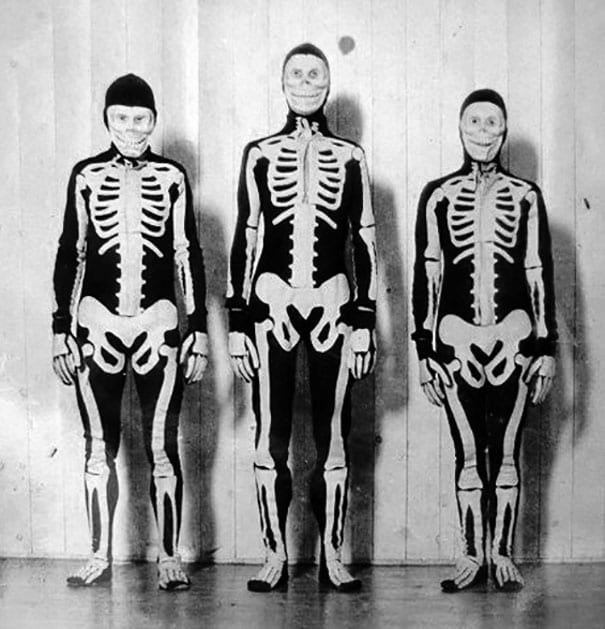
The main concern, as far as why people dressed up so scary, like those little tykes above in their skeleton kit, was so they could mix in with the demonic spirits that were said to come out that night.
The couple
But why did the diabolical have a field day on October the 31st? Because on November the 1st, the Christians would dedicate a whole day to remembering the honored dead, the saints, the martyrs, and all those folks that went up to heaven not being rotten eggs.
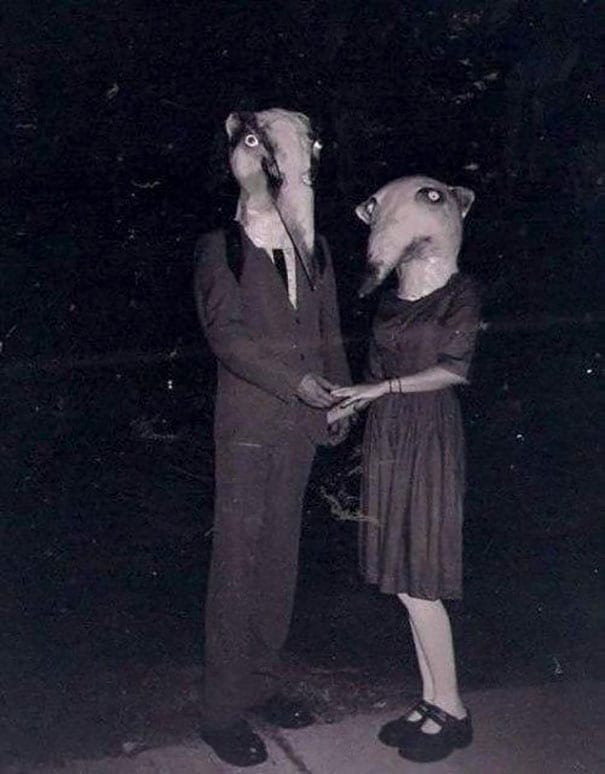
Couples love to dress up for Halloween. Bookends that tell the world that they are an item. Raggedy Anne and Raggedy Tom. The Joker and Harley. Batman and Catwoman. A Bottle of Jam and a Jar of Peanut Butter. Or, like these to cats, as mole people.
What The Hell?
As such, the previous night or nights – there’s also Devil’s Night – the monsters and fairies and demons went gonzo! A way of desecrating what would come on the Feast Of Saints. And folks would have to dress up so they could camouflage their appearance.
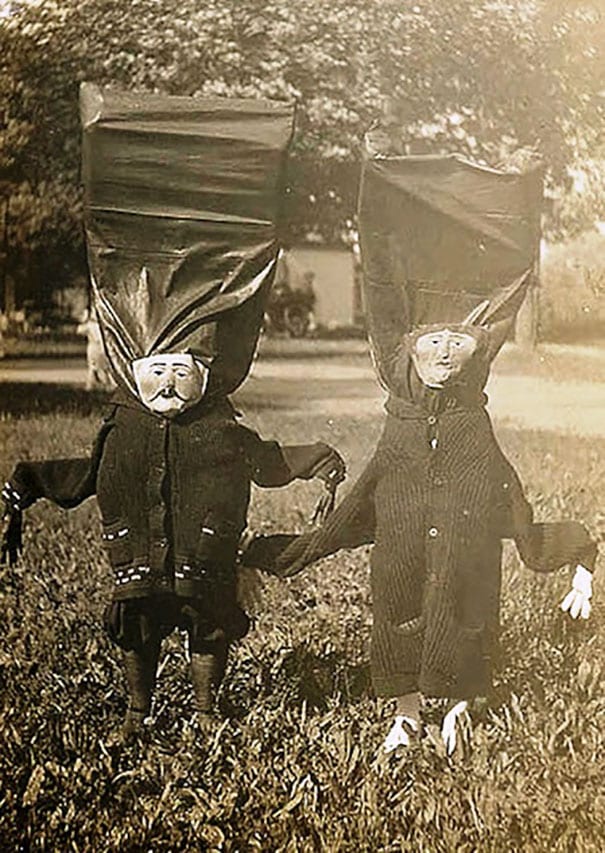
These two are straight out of Hieronymus Bosch’s landscape from hell series. A truly ghastly pair that might just seem right at home with a pitchfork in one of Hade’s fiery jacuzzis. Right out of a picture that creates nightmares.
The Eyes
Today’s tradition is thought to have been influenced by Gaelic. Mostly by their folk beliefs and customs. Some of these beliefs are from pagan roots. Sure, there is a lot of Roman and Christian imagery, but in general, it’s pagan most of the way.

We can only speculate but; either one of these two is an optometrist or a huge fan of Luis Buñel’s filmography. It has to be one of those options cause otherwise, these costumes make no sense. Absolutely none whatsoever.
The Doll
The costumes were part of that Old Irish heritage and a byproduct of the Celtic Festival of Samhain, which means “summer’s end.” Costumes like the one below were rather normal to be seen on your next-door neighbors on All Hallows’ Eve.
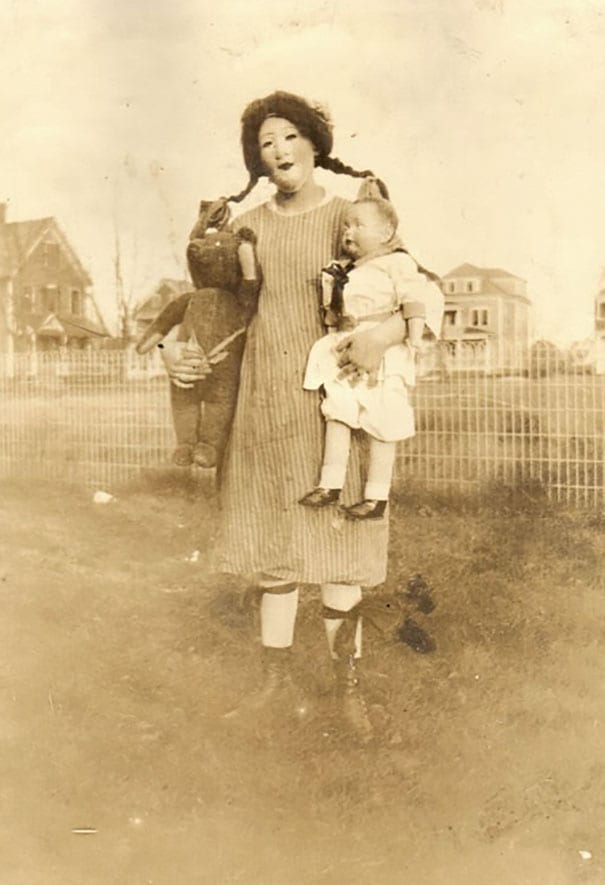
If the world ever did end, and some of us survived the Apocalypse, we could be certain that someday something like that above would skirt into the road right in front of us. In such a case, here’s our advice: “floor it.”
Kids Will Be Kids
Samhain was the most important of the medieval festivals. Why? It was mostly the time when you picked the harvest, and in many places, it was the “first day of winter.” Winter, back in those days, wasn’t a snowy wonderland.
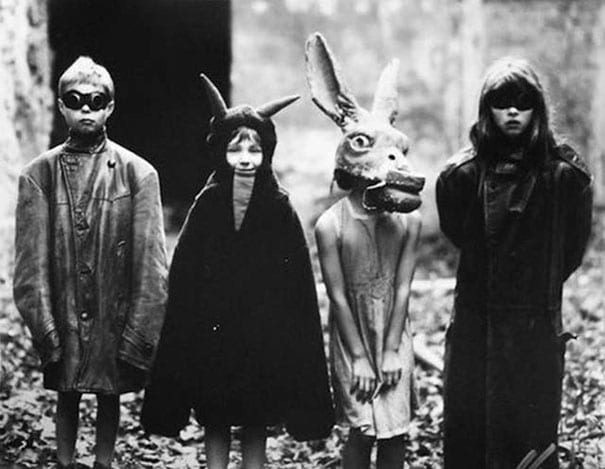
Winter back when heaters were a pipe-dream, and Publix was closed for a century, or two needed its own superhero group to fight the beasts and things that went bump in the night, like this faux- Avengers team. Each one of these tykes has an origin story, of that we’re sure of.
The Wild Bunch
Or gang up in a community effort, like those below, ready to give the season holy hell if it started to get too hairy. It was a way of laughing at the coming frigid wasteland and also forming bonds as a community.
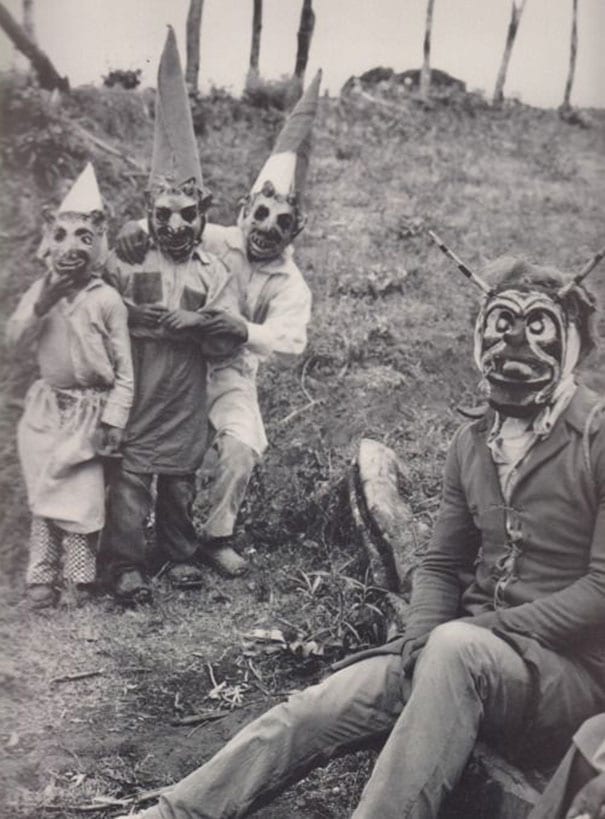
Folks used to hate winter – and some still do. All year long, you prepared for winter in the north. It was harsh, full of animals desperate for food, longs nights, and a cold that could be fatal. Hence people started to flick it the finger – so to speak – with costumes like the one above.
Rock On
Winter was the “darker half” of the year. In old traditions, this pass from summer to winter marked a limited time when the boundary between the world of the living and the world of the dead “the Otherworld” thinned.
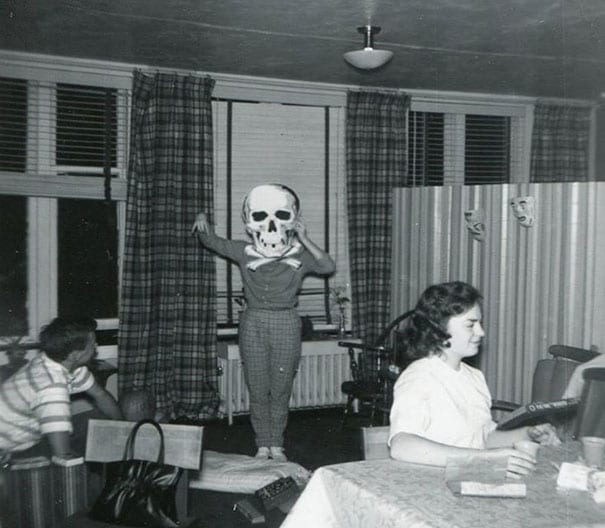
The first thing most people from that photo above, once you read the commentaries, see is the fact that the little dickens is doing the inverted “Rock On”… Why? Who knows. It really is an odd pic’ and one that speaks volumes of Halloween’s old sang-froi.
The Crew
Folks were extremely frightened of the Winter period. And most went back to their old believes and pagan religions. Sure, Christianity was a thing, but when the going got rough, they started to pray to all of the “ancient gods.”
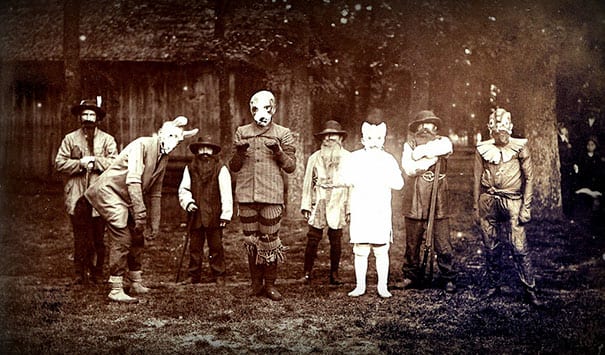
Ancient Gods were supposed to embolden them and blanket them with powers. Like the one above, mobs started to form of people going around town dressed like it was a Walking Dead parade. Guards against the creatures of the night.
The Bear Hunt
Talismans, icons, wards, signals and signs, you name it, they placed it around their houses and person. It was a time when spirits and fairies could easily come into this world and make a pig’s breakfast out of everything.
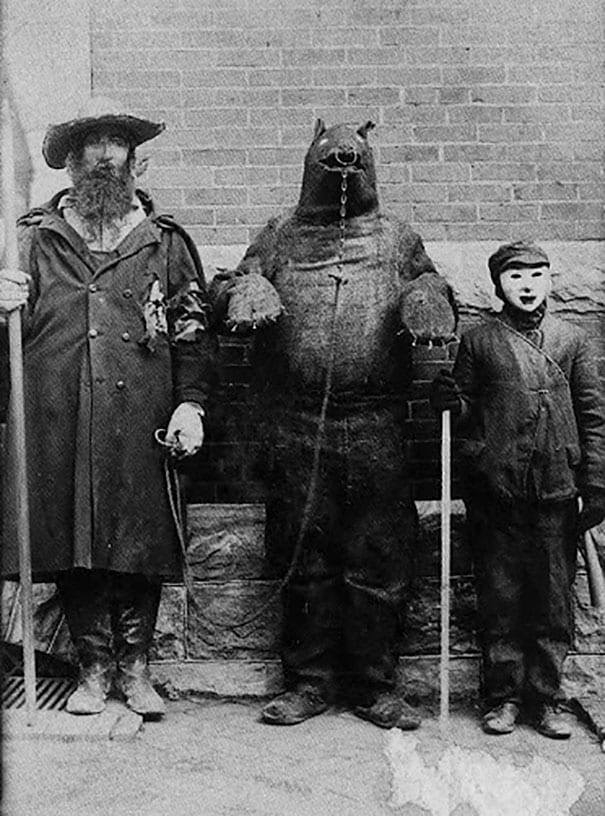
And it wasn’t just supernatural creatures but everyday animals. Folks started to create elaborate scarecrows out of costumes, like the one documented in that pic’ above, to ward off the night predators that would come out of the woods in search of food; bears, wolves, timber lions, etc.
The Michelin Man
The souls of the dead were said to come knocking at their relative’s houses and seek hospitality. The unholy were said to be given a chance to wreak havoc… and everything in between, well, to them, it was Christmas.

So people started to dress up as characters from their storybooks or tales. Characters they felt could ward off the damned. And how do you fight a monster? Easy, by showing said monster a bigger Godzilla… or in this case, The freaking Michelin Man.
Just A Few Holes
The main icons and things we now associate with Halloween are off-shots of games and rituals not only intended to ward against the wicked but to foretell one’s future fates… particularly concerning such matters like their deaths and marriages.
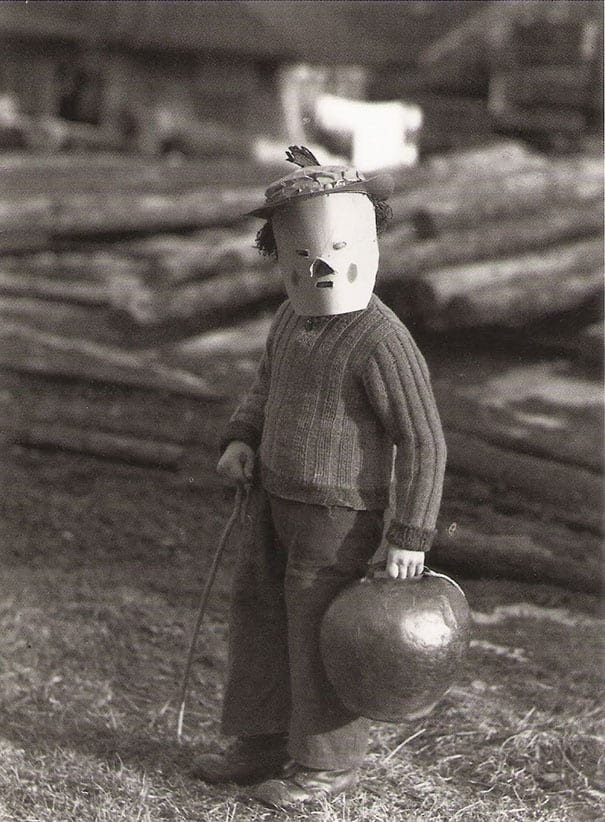
Meanwhile, costumes weren’t too elaborate, just a couple of paper sacks or sheets with holes in them. The objective was to make them as frightening as possible, and the kids had to act like they were walking, talking, Freddy Krugers.
Adults Playing
Apples bobbing, nut roasting, scrying, molten lead, dream interpretation, mirror-gazing were normal pass-times during this frightful time. As the years passed, and we as a species became less superstitious, things started losing their edge, and they became pale reflections of their former self.
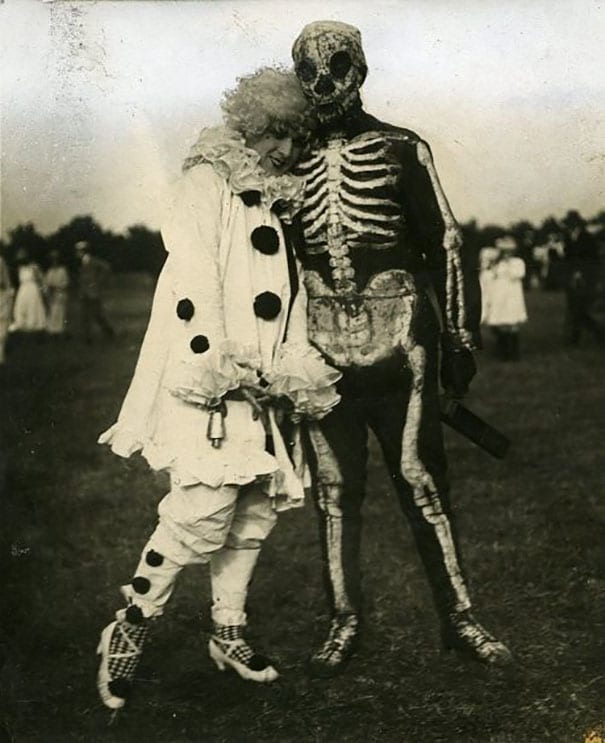
Adults boosted the whole pageantry; they weren’t exempt. During November, pairs like the ones above used to get into all manner of nasty and strange situations. In Victorian England, for example, folks would import mummies from Cairo and have “unwrapping” parties at home.
The Kitchen Witch
Bonfires and candles were lit all around the town. Special bonfires that were meant to cleanse and protect. They were said to carry the power of the sun and hold back decay and darkness. That was, after all, the main objective, tell the nigh hordes to take a hike.

And one of the main players, per German Traditions, was the kitchen witch – like the one shown above. The Kitchen Witch would sweep away the bad spirits… and she became one of the most coveted and popular costumes of the time.
The Pokemon Of Old
The whole festival got out of hand so rapidly that in the latter half of the 17th century, the church had to come in a tell everyone to simply “stop!” They were banned due to their witchy nature and pagan sensibilities.
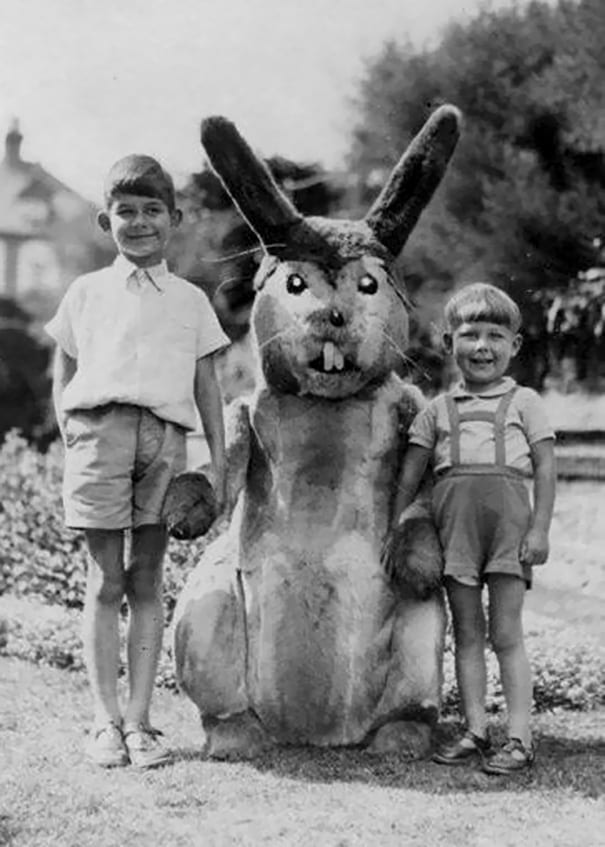
But, the pagan ways were the fun ways… as anyone who’s seen Midsummers will tell you. the Church had to adapt… Like it did for Easter by making a bunny, like the one above, a symbol of that festivity; a bunny that – it seems – is also a fan of Halloween.
The Jester
The church tried to ban these festivals… And, guess what? They couldn’t! It was too ingrained into people’s traditions. Plus, let’s be honest; people were having a blast! So, what did they do? It left them no choice but to co-opt the whole affair.
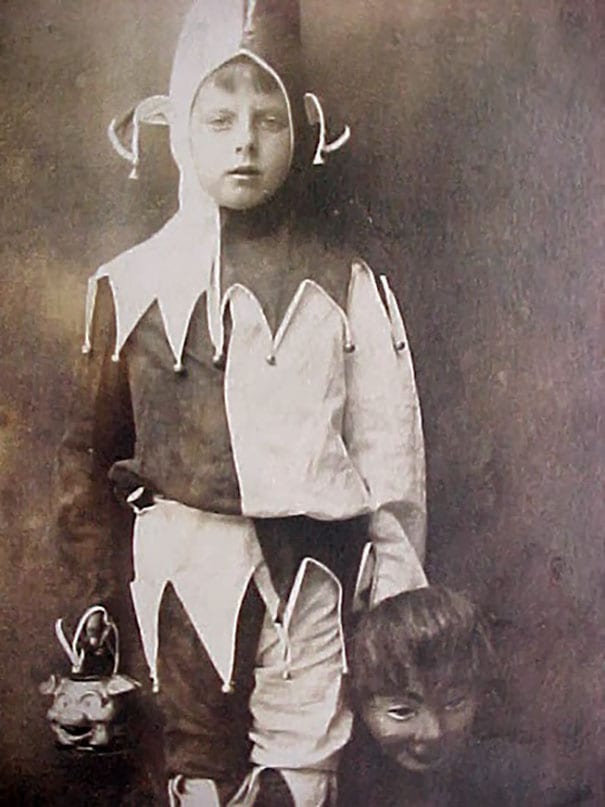
Meanwhile, all across Europe, particularly in the UK, kids were trying to be as offensive, as grizzly, and as grotesque as humanly possible. And the parents, as that photo above of the Jester with the severed head, will no doubt explain, were applauding their efforts.
Going Shopping
Elders of the church started to tweak the holiday in order to massage its existence into Christian mythology. It was no longer a holiday to ward of fairies and prevent the souls of the dead from falling to earth… But a festival which served to keep “away the devil.”

And guess what? It was a financial bonanza. Churches started to sell, aside from religious icons, the trinkets of Halloween. They start commercializing the whole pagan holiday and making a killing. Shops, like the one above, were common, only instead of finding them in the main street, you’d probably stumbled onto them next to the church altar.
Chewie
In the 16th Century, under new auspice from the Church, the festival of Halloween began to morph. It was now a family festival with a bit of horse-play. People still believed in the old ways, but the Church basically blanketed their beliefs in a tsunami of treats, candy, and those funky candy corn things.
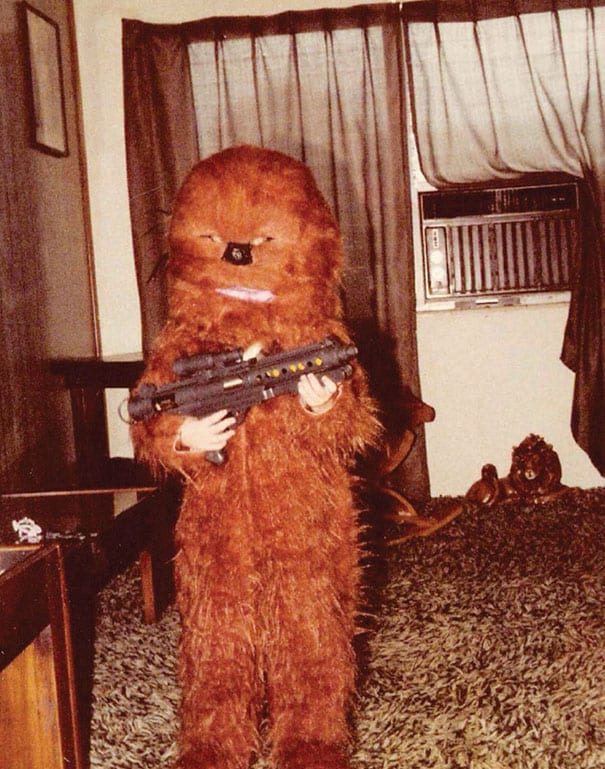
And Star Wars… Somewhere along the way, Star Wars came along and took some of the bite out of Halloween. Folks started to dress up as superheroes. Less Darth Vader – the costume was too hard – and more Han, Chewie, or Luke.
Skeletons
It was during the 16th century that guising became a trend. The whole tradition of dressing started out in Ireland, Scotland, the Isle of Man, and Wales. It became a huge, HUGE HIT! And the Church? Cornered the market on costumes and decorations.

One of the most sought after costumes were skeletons, corpses, and ghosts, like the one above, due in part to the church’s affiliation with the afterlife and its religious canvas full of skeletons and spirits. They were easy to produce and, more importantly, apt for the occasion.
The Shake Down Gang
Why did people start to dress up? Well, because of two distinct phenomenons. One: to make it hard for the devils to pick you out of a crowd and do nasty things to you. Two: to impersonate said devils and fool folks into giving you food.

Folks were poor, and suddenly they had a holiday where they could snap on a couple of bags over their heads and demand that their neighbors feed them. It was a win-win situation. Gangs, like the one above, became fixtures during the harshest days of winter.
The Actors
Mummers – troupe amateur actors and guisers, mostly kids – would go around impersonating the old spirits of winter and demand a reward from the superstitious in exchange for good fortune… Yup, it was the supernatural equivalent of the Mob’s Protection rackets.
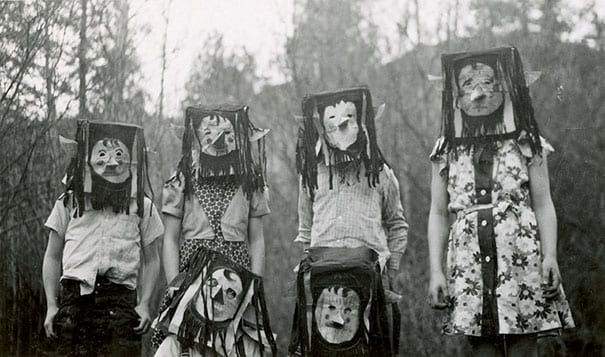
Suddenly you had hills and countryside besieged by images like the one above. Creepy folks in all manner of getups scouring the landscape causing mischief, having a laugh, and more importantly getting fed… and everyone was in on the whole debacle.
Poor Cat
In Scotland and parts of Ireland, youths started to go from house-to-house with painted faces and masks, threatening homeowners with mischief if they were turned away at the door. Not tepee the house, but more go full Jason on the property owners.
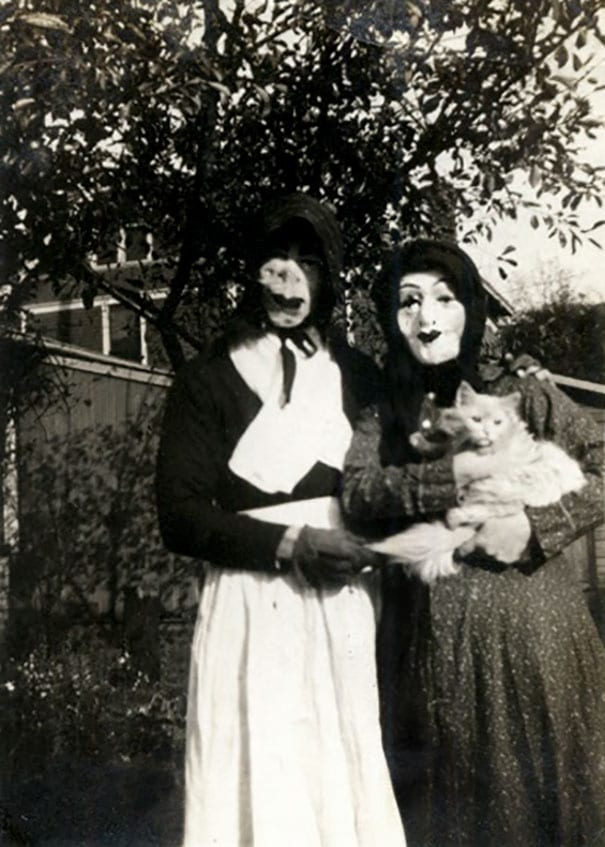
And the kids’ parents? They had a couple of nights off. Junior had places to unwind and go bonkers, plus get fed, and they didn’t even have to do a thing; the parents started to love Halloween. It was better than Christmas!
The Pranksters
From at least the early 18th century in Ireland and the Scottish Highlands, pranksters were known to roam the streets during the winter months carrying lanterns. It was here that the idea of a carved-out turnip evolved into the now famous Jack-O-Lantern.

Groups like the one above descending like a horror movie on a house, knocking on the door demanding food… Not candy, not a Snicker bar, but a meal. Soul cakes, small baked treats, started to become a valued commodity, and from those blessed by the church, the idea of handing out sugar bombs evolved.
Pennywise
But, why are Halloween’s origins so hard to pinpoint? Because, in a way, it is a mixed bag of traditions and festivals. Customs and rituals that started in one region and then clashed with another geographical spot and sort of blended into what is now commonly known as Halloween.
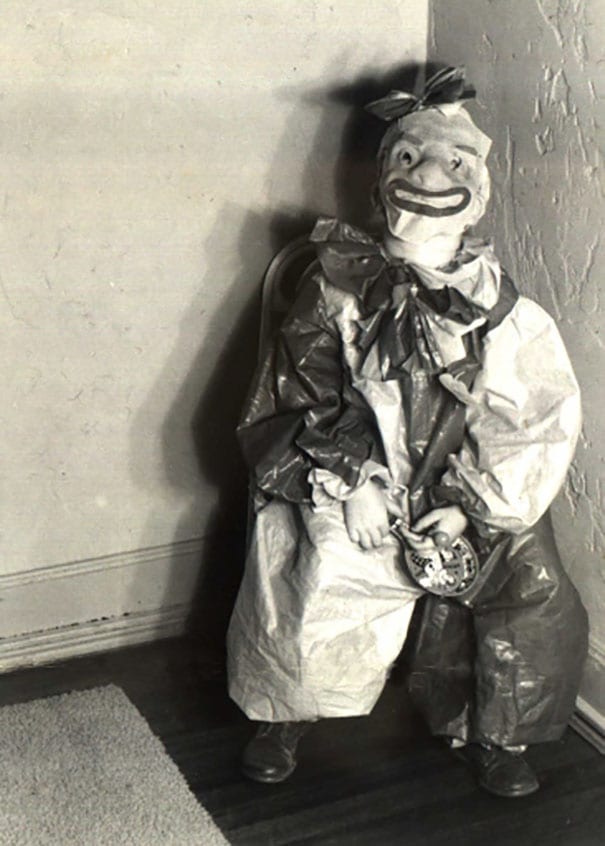
People in Italy and other places in the Mediterranean had their own traditions and a cultural affinity – due to the Romans and Creeks – of dressing up in fanfare and costumes. Clowns, like the one above, were common things during that epoch.
Uncle Sam
One of the earliest representations of people praising the dead and giving thanks for their sacrifices, and honoring them as if they were present in a household, comes from 609 when Pope Boniface IV created different dates to commemorate the saints and martyrs.
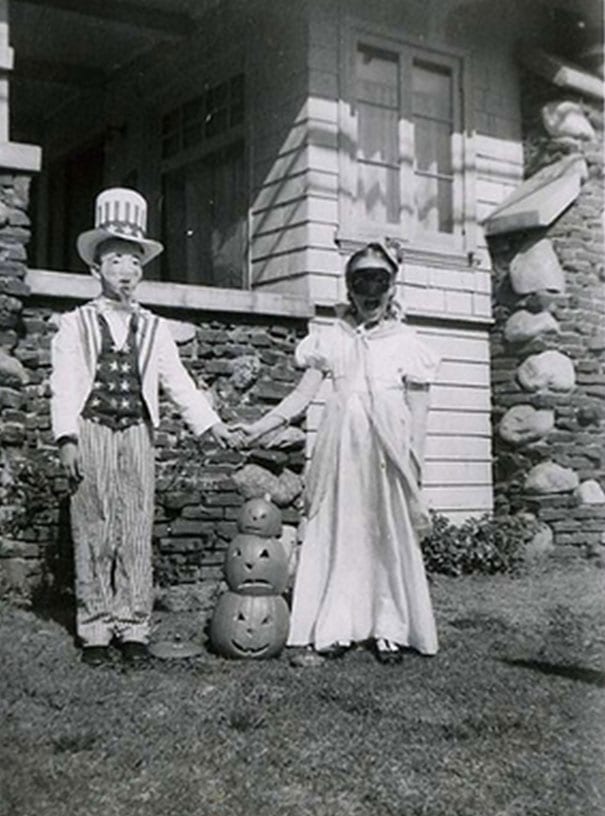
And it wasn’t just saints and martyrs but political figures, literary icons, and other famous folks. People would dress up like Caesar or certain emperors of Rome. In America, when the fad finally arrived in the late 19th century, one of the most normal costumes to spot down the street would have been an Uncle Sam.
Play Ball
The feast of All Hallows’, on its current date, October 31st, can be traced to Pope Gregory III’s founding of a section of St. Peter’s church dedicated to relics “of the holy apostles and of all saints, martyrs, and confessors.”
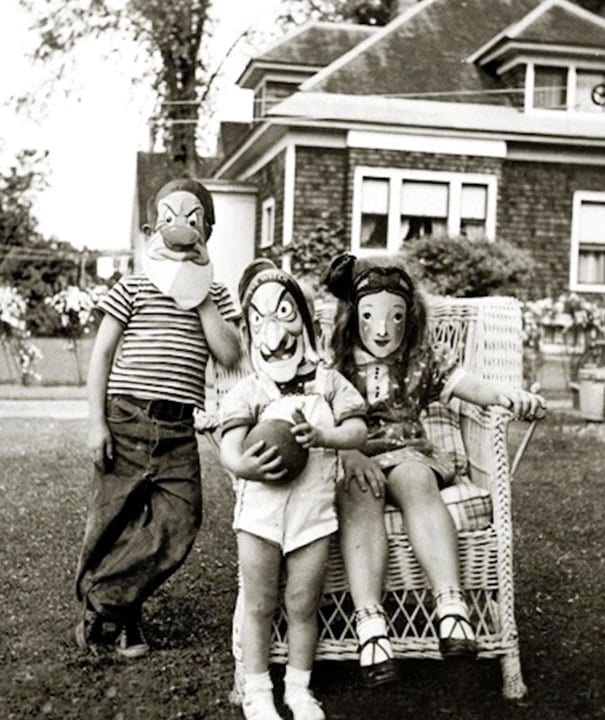
The feast became a national holiday in the places where the Holy Roman Church had sway. Folks would get together and join in community activities and, above all, visit holy temples. The kids would play outside, like the ones above, while their parents prayed.
Professor Pig
In 835, in order to get one up on the Pagans and Celts, the Pope moved the date of the founding of this reliquary, and its annual festival, to the 1st Of November… To start celebrations the night before.

This costume vaguely reminds us of a Batman villain created by Grant Morrison, Professor Pig, although this one is quite frankly macabre. It’s a weird, unusual, and incredibly frightening piece of craftsmanship. Something worthy of a cell at Arkham Asylum.
Riders of The Storm
By the late 12 century, All Feast Day – and Hallow’s Eve – had become holy days of obligation across Europe; church bells would ring for the souls in purgatory, and criers – women and men hired by the church – would parade the streets mourning the dead.

And even animals got into the swing of Halloween. Folks would dress them up and parade them in what was for the time elaborate costumes and bizarre regalia. An out tableau that became incredibly common in Europe, particularly in Italy, where cities already had a tradition for masquerades.
Coming in Swinging
During the blessed days of All Hallow’s Eve and Saint’s Day, people would flock to churches and marvel at the relics displayed at each shrine. It was an important date for parishioners and for the church’s coffers. It was important for their economy.
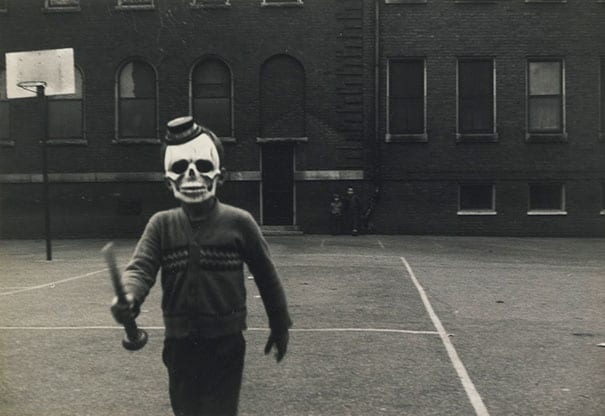
It became such a pivotal part of the church’s fundraising schemes that authorities from temples were basically strong-arming folks into participating in the festivities by late medieval times. It was now a minor sin to stay at home during Halloween and Saint’s Day.
The Bacardi Dress
In the Middle Ages, churches that were too poor and didn’t have any relics had to somehow sway the folks into coming to their doors and participating in mass and donating to the temple. And folks had to do adapt their costumes inspired by their financial situation.
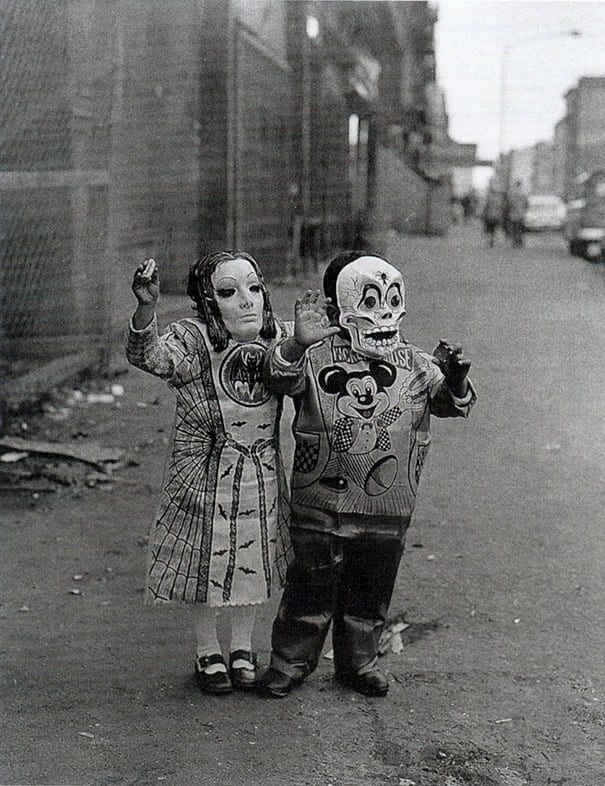
Churches that were missing relics started to hire actors and then encouraged parishioners to dress as saints. The more extravagant, the better… They needed to attract the crowds. People started to do just about everything, like the kids above with a Bacardi dress, to fit in and participate. Some costumes were elaborate and rich, others cheap and barely held together. Things went gonzo.
The Babe
Emboldened by their temples, folks started dressing out in outlandish and oftentimes bloody depictions of their saints. The common person sporting a costume portraying the way their favorite saint had died… Most Saints, FYI, died extremely bloody. And kids, no matter the size – take a guess at how old the one below is – wanted to play sanguine dress-up.
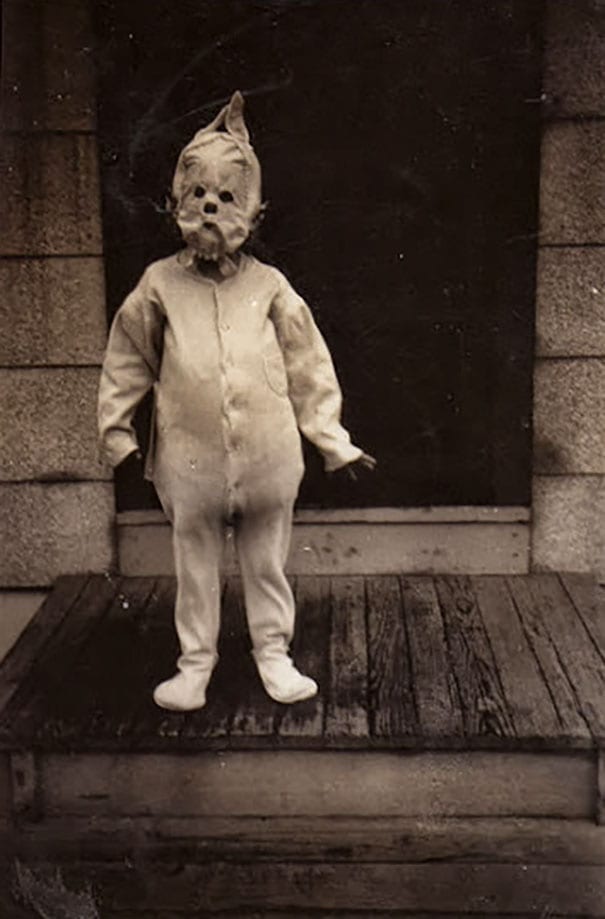
Kids of all sizes started to join the festivities. It was a free-for-all. Parents would dress their kids up, the most superstitious ones certain that if they failed in that task, then their kid’s souls wouldn’t go to heaven.
The Wild Bunch
Suddenly, on All Hallows’ Eve, you had people flocking to their town’s church bathed in blood with fake arrows coming out of their bodies. A person blacked to represent a saint burned at the stake. Individuals with “flayed” skin.
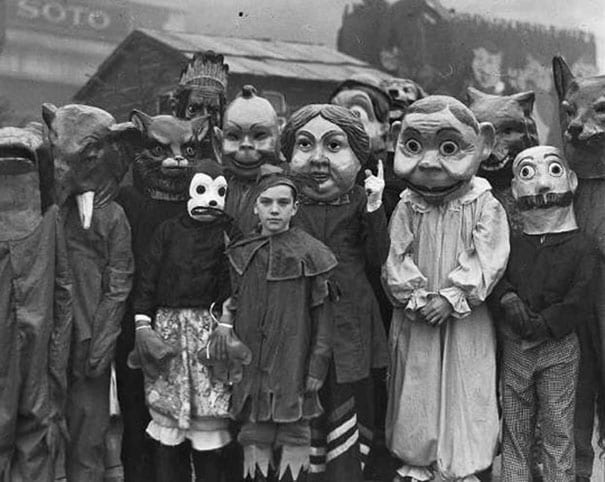
Saints had horrible ends… and people, animated by their churches, started putting their crafting skills to the test. Finding ways to show up at mass in the most horrendous way possible. It was a wild time. Groups of friends would put on theatrics, re-enacting the saint’s death. Groups of friends like the ones above looking dead-eye at the camera with mischief in their eyes.
The Siblings
In France, this savage celebration was going gangbuster. The French were having a blast with it. They started to promote the rumor “that once a year, on Hallowe’en, the dead of the churchyards rose for one more wild, hideous carnival.”
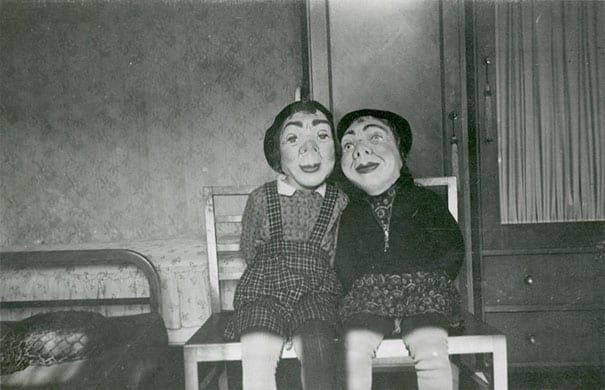
Families began to spread the idea of small celebrations and dinners. Kids started dressing in the clothes of their dead relatives. The family would gather and go to the cemeteries to drink and dine by a grave. Kids, like the ones above in those creepy, aunt costumes, would gather around and tell stories of the deceased.
The Bird
In high society, or for that matter, in homes with a roof, folks started to have huge shindigs. They started dressing in all manner of costumes. Like the one below, birds became particularly popular once tales from the New World and its parrots hit the mainstream. These celebrations had a name.
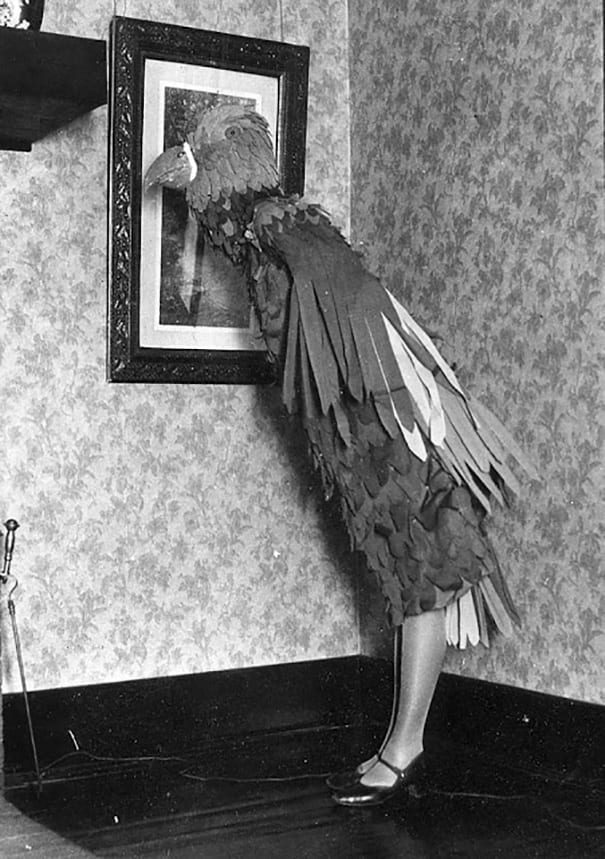
The Danse Macabre was the carnival’s name. Churches, trying to catch the public’s attention, began depicting the Danse Macabre in their decoration… and, more importantly, everyone – even nobles, and the upper class started to get in on the fun.
Ghouls and Goblins
On Halloween, the danse macabre was enacted everywhere; from village squares to kings’ courts. People would dress up as corpses and spend the night drinking, frolicking, dancing, and, well, misbehaving. And not just corpses, but other wild creatures, like the ones below. Ghouls, Goblins, Tree demons and wild boars.
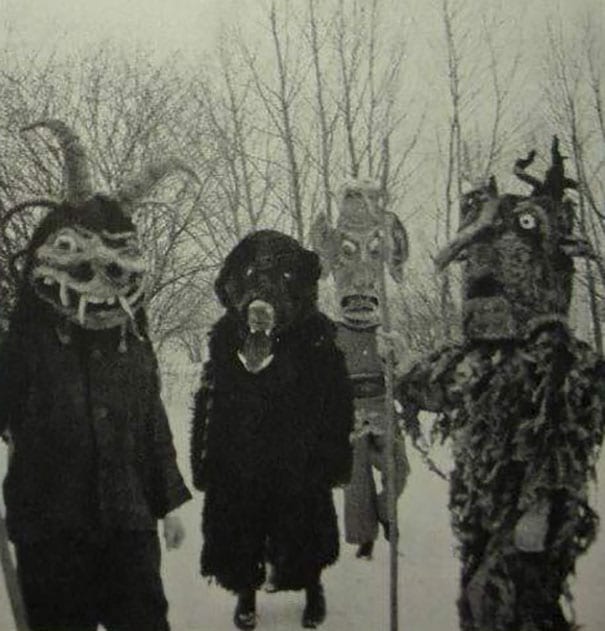
In England, meanwhile, the whole tradition was coming under attack. Protestants berating the affair as “popish.” Still, the common folk could give two dimes about the theology of it… They just wanted to PURGE…We mean to let loose and have some fun.
The Ghosts
Due to the rising popularity of Guy Fawkes Night – on November the 5th – and the fact that things in Scotland and Ireland were a bit too weird – with all those kids blackmailing homeowners into giving them food – the authorities started to promote Halloween as a “fun, family, festival.” That’s where the white sheet ghost costume started to gather steam.

The authorities in England mixed in all those traditions, took a bit from Guy Fawkes night, stuck all of those ideas into a barrel.. and TADA… Out came a version of modern-day Halloween. The idea still to act weird and dress up as scary as possible, but the religious nature of it sort of edited out.
Breaking Head
But, when did it come, and how did it come to North America? Halloween started to become a holiday in the States in the late 19th century, due mostly to the mass immigration of Irish and Scottish. And at the beginning, like the photo below with all those hooligans and stout sticks attest to, it was a nasty holiday.

Kids loved Halloween and still do, and adults in the New World saw it as a night where all cautions were thrown to the wind. Due to its bombastic nature, it was rapidly assimilated into mainstream society and celebrated by all walks of folks. Social, racial and religious backgrounds had nothing to do with Halloween.
The Ghost Academy
By 1974, Halloween was here to stay. Corporations started to see the money cow it was turning out to be. On that year, the yearly Greenwich Village Halloween Parade attracted thousands of people and over two million spectators… It was one of the first parades to be broadcast to a television audience.

Schools, jobs, government institutions, everyone took a knee under the light of the Jack O’ Lantern. Schools like the one above started promoting art-projects in class to help kids get their costumes done by Halloween. Driving the tykes to excel and work in teams to advertise their school spirit in the streets while trick r’ treating.
Jack O’ Lantern
Why did people dress up, like this little kid, as Jack O’ Lanterns? Well, back in those long-forgotten days, the Jack O’ LAntern was one of the most potent icons to ward off the devil… and It’s all due to the story of Stingy Jack.
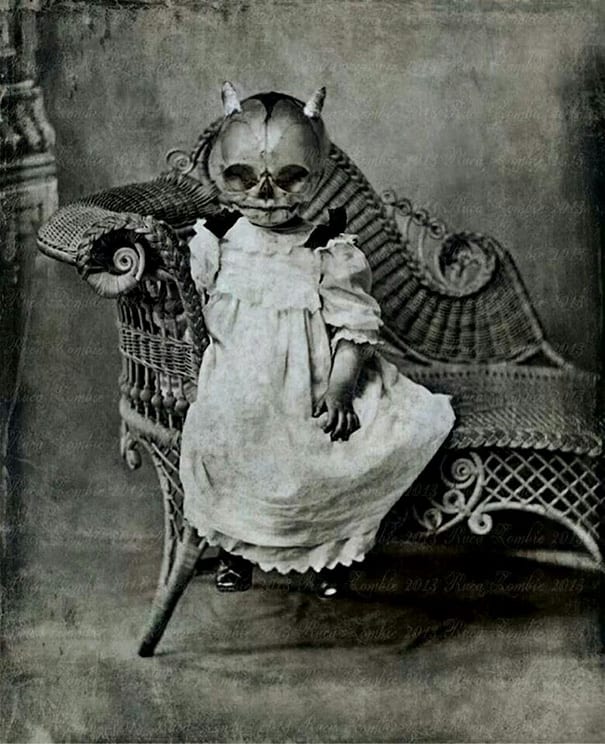
Although now on a more thorough view, it’s rather plain to see that this little monster isn’t dressed with a pumpkin on her head, but what looks like… we want to say a Cat Skull… But … that’s just TOO morbid.
Jack O’ Lantern 2
We doubled checked, and this one really is a Jack O’ Lantern. A creepy kid with a Jack O’ Lantern mask, next to an even creepier kid with a black bag on her face. An honest to god nightmare scene.
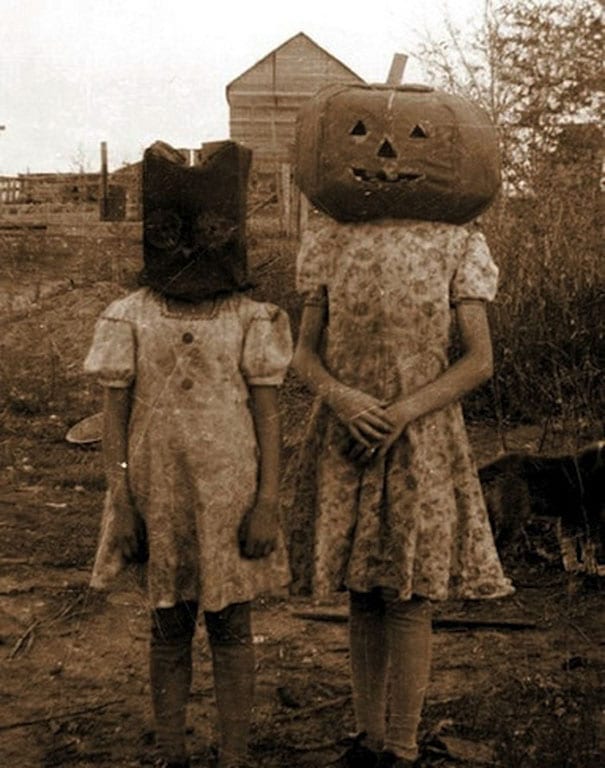
Like the one shown in this photo, Stingy Jack is an old Irish Folk Tale and one that’s the origin of the Jack O’ Lantern that we know of today, A drunkard, Stingy Jack, somehow fooled Satan to climb a tree…
The Devil In All Things
Satan, or the Devil – like this kid below is dressed up as – following Stingy Jack’s advice climbs up the tree. Jack, just as Old Scratch reaches the top, runs up to the bark and carves out a cross.
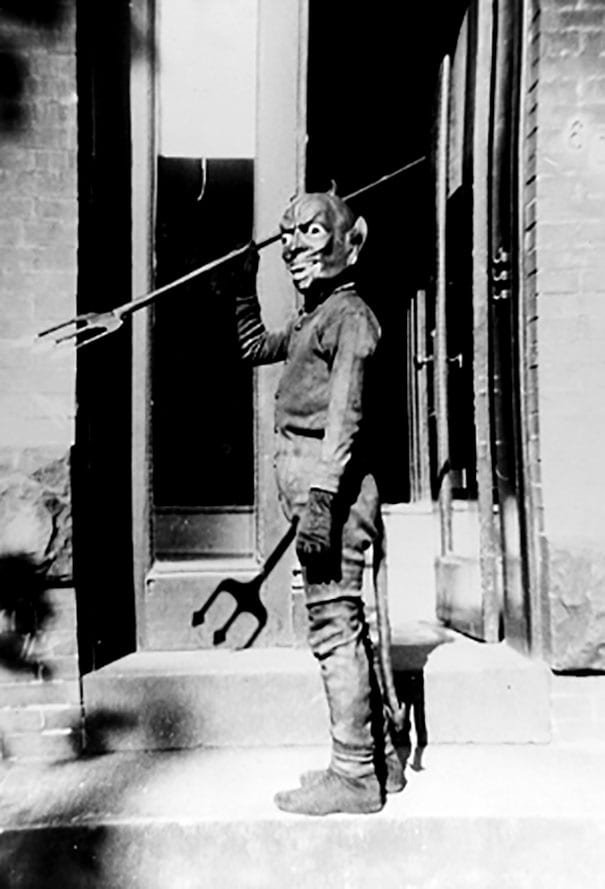
So, Satan gets stuck in the tree. Jack bargains with the Horned One. He’ll scratch out the cross if the Devil promises to never-ever take his soul. Satan agrees. A kind of win-win situation of the most disturbing kind.
Jack O’ Lantern 3
So, Jack – the original mischief-maker like these kids setting fire to that car – spends the rest of his life getting up to no good. Drinking, boozing, having a good time, knowing he’ll never go to hell, thanks to the deal made.
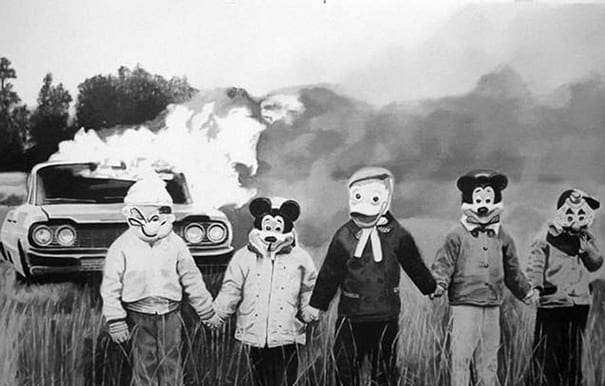
Jack, like those tykes up above – setting the world on fire and wondering where they can get some marshmallows for the flames – lives life to the extreme. You name it, Jack did it. He had a get out of jail free card in his pocket.
The Flashback Skeleton
Stingy Jack dies. Blam! And Heaven looks at his rap-sheet and turns him away. The Devil, meanwhile, can’t collect his soul. So, there’s Jack, stuck out in the world a spirit with no home and nowhere to find eternal rest.
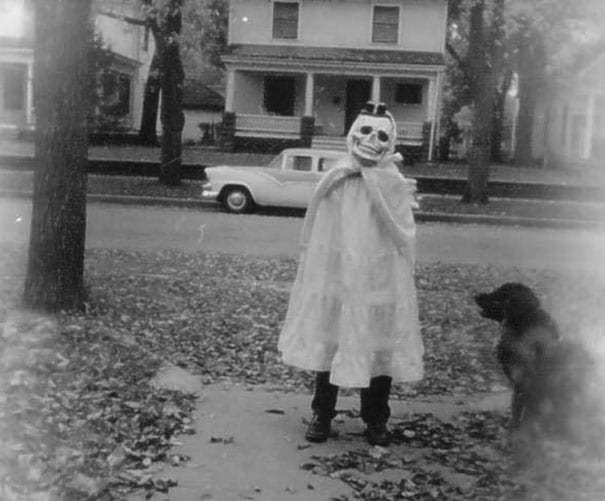
Like this kid, Jack seems to be an immaterial wraith wandering purgatory. A skeleton, just like this kid, caught in the wind wrapped by the fog, doomed to plague and torment the living for all of time- lost and alone.
The Birth of An Icon
The Devil looks at Stingy Jack, and something melts. Like The Grinch, the Devil’s heart grows that day… Satan kicks a lump of coal at Jack’s feet – the real deal from the bowels of Hades – coal that will never go out.

Jack sees the embers of the rock sizzle in the night… and for a second, just one, the world trembles at what is about to happen. Jack’s next actions are responsible for kids like the ones above, having such a blast on Halloween. They are responsible for part of the rituals and one of the best knick-knacks, that one in the middle of the table.
The Devil
“Jack,” the Devil goes, “use that to stay warm.” Jack grabs a pumpkin, carves it out, and sticks the coal inside… Lol-and-behold, a Jack O’ Lantern, a Halloween tradition is born, and suddenly Stingy Jack now has a way to light his path and keep warm.

But it doesn’t end there. Jack, doomed to wander the earth with his lantern becomes a beacon for all the demons, devils, ghouls, and goblins that roam the land. They gather around Jack and use Jack’s lantern to find their prey. Creatures, like the one above, that were meant to scare the living daylights from mortals.
